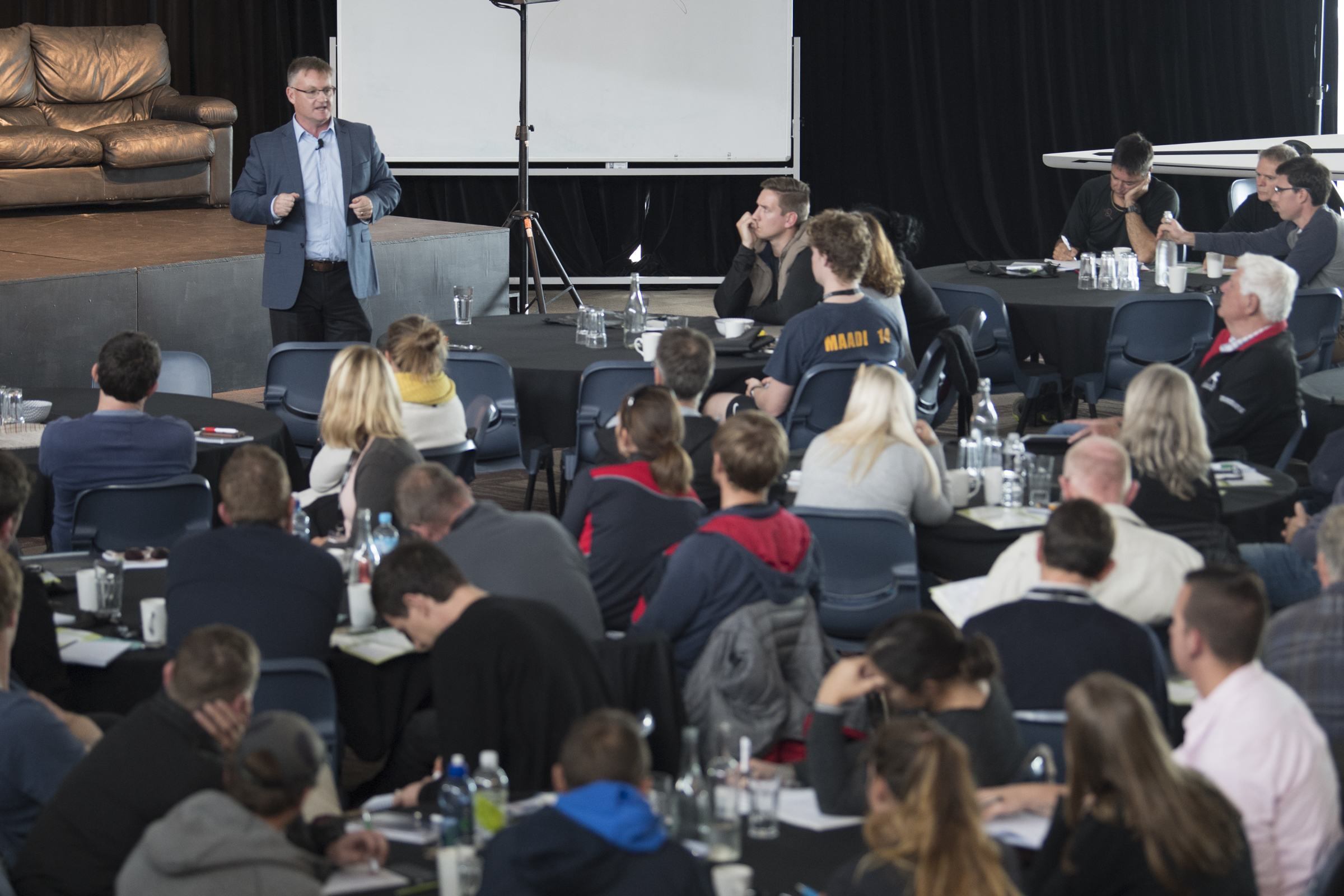Thinking Outside the Box in Coaching in High Performance Sport – Creativity is King!

There is a tribe in the highlands of Papua New Guinea who have never seen modern technology, who could not even imagine using the latest electronic tools, who can not comprehend western society concepts of computing, social media, high speed Internet links, laser technology or satellite navigation.
This tribe, believes that the best way – the only way – the way everyone must adopt to cut down a tree is to make an axe by lashing a sharp rock to a piece of wood. This knowledge has been passed down from generation to generation for centuries….this tribe knows for certain that the only way to cut down a tree is to use a hand made stone ax.
And then, one day, through the forest, comes a man from the USA carrying a chain saw…….
And it is the same with all sports!
You want to be a football coach. So what do you do?
You enrol in a football coaching course. You attend a weekend football coaching course. You listen to the football coaching presentations, you read the football coaching books and you do the football coaching practical sessions.
And all of these sessions are presented by football coaches who like you, learnt from other football coaches who learnt from other football coaches who learnt from other football coaches.
There is no doubt a level of sports specific knowledge and information is critical to learn in all sports: you need a certain level of core level or basic knowledge in the sport you are planning to coach.
However, believing that all the solutions to football (or tennis or swimming or hockey etc) problems lie within football limits the potential for progress and is a coaching dead end. Now more than ever, coaching is creativity.
In truth, like the tribe in Papua New Guinea, believing that what your sport knows and what your sport does is the only way of doing things is one step short of insanity and a recipe for coaching mediocrity.
The reason you believe that your sport “sees all and knows all” is that in all likelihood you don’t really know what else is out there – and unless someone comes crashing into your sport with a “chainsaw” of new ideas, information and innovations – it is likely you never will know what else is out there.
Particularly in high performance coaching, where winning means being unique, being different, being the first, being more innovative and more creative than your opposition, copying the ideas of others within your own sport means failure: copying equals losing – the best ideas win!
To think outside the box, you have to first step outside the box: you have to move outside of your sport and look at:
- Coaching in other sports;
- Coaching in other industries which involve teaching, learning, coaching, communication and developing skills;
- Coaching in other fields of endeavour which prize innovation, creativity, uniqueness, achievement and success.
Now, more than ever, Creativity is King! The Internet has made information about your sport available anywhere, anytime, to anyone and for free – everyone is an expert.
You have to assume that now everyone within your sport knows what you know – and that knowledge about your own sport is freely available to other coaches, athletes, parents, administrators, the media and the general public – everyone is an expert.
So, if all your competitors know what you know and have learnt it the same way you learnt it, how will you gain an advantage over them??????
The most important part of thinking outside the box is accepting that other people, other sports, other coaches might know more than you (and your sport) know. It is critical to look outside of the box with an open mind, an inquisitive spirit and a humble soul and to not judge what you see out there from a “that’s not the way we do it” perspective.
I have seen more than one “benchmarking” group from a sport visit other sports but do so with their eyes, ears, hearts and minds closed – wishing only to confirm how much better they are than everyone else. You have to walk away from your “box” and look at new ideas, information and innovations objectively, intelligently and inquisitively.
The secret to coaching success in the future lies in knowing three things:
- “I know as much as I can know about my sport“;
- “I know as much as I can know about other sports and other fields of endeavour“;
- “I know that I must continue to strive to learn as much as I can learn about my sport, other sports and other fields of endeavour if I am to succeed as a coach”.
So, what do you know?
Wayne Goldsmith


6 Comments
Jeremy Pryce · May 5, 2010 at 5:33 am
When it all boils down, all we really see is the past. Think about it: Everything we know in the present is built on our experience in the past.
Take the example of a cup. All we are reviewing is our past experience of picking up the cup, being thirsty, drinking from a cup, feeling it against our lips etc. All our aesthetic reactions to the cup are based on passed experience. That´s why we know whether this kind of cup will break or not if we drop it. We have no idea of the cup outside our past experience. So, do we really see the cup at all, or are we seeing our past experience? This is why it´s so frigging hard to think outside the box.
Just my humble opinion…..
Wayne Goldsmith · May 5, 2010 at 6:34 am
Thanks JP.
I think that’s the reason why it is so hard to show athletes their potential and what they can achieve in the future.
You can feel and see what you have done in the past and what you are doing now but the future is often a mystery and a hard concept for people to understand. But we know that the people can really see and feel the future get there first and in doing so change the world.
That’s why we call it a “vision” – you need to be able to really see it clearly if you are going to strive to achieve it.
Thanks again,
WG
james marshall · May 6, 2010 at 5:56 am
as far as creativity goes, I have ordered the book from this guy:
http://www.youtube.com/watch?v=UpmNySlM4p8&annotation_id=annotation_398728&f
who appears to have some good ideas.
Wayne Goldsmith · May 7, 2010 at 9:10 am
Thanks James.
I have read Robinson’s book The Element – great stuff.
WG
Mark Upton · May 6, 2010 at 11:34 pm
Some great points in this post Wayne. Also Jeremy’s and your comments on the past is relevant and I think touches on another key point – the courage required to action the “thinking outside the box”. When you do this there is no “past” experiences or evidence to support your action, it is truly a journey into the unknown.
However with that clear vision you talk about and the courage to go after that vision great things can be achieved – you just have to be prepared to risk it all going “pear-shaped” to get there!
cheers
Mark Upton
teamsportcoaching.com
Wayne Goldsmith · May 7, 2010 at 9:19 am
Thanks Mark.
I am currently working with a client on how to best integrate their sports science support for coaches and athletes. My focus in not on teaching them how to do their own jobs – I assume they know that better than I ever will – my focus is on teaching the various sports science disciplines – physiology, biomechanics, nutrition, psychology, etc to work together as integrated, cross disciplinary, problem solving teams.
Now, you would think that in 2010 we would have evolved to the point that the multi-disciplinary approach to sports science is just accepted and embraced but I still face aggressive opposition – particularly from the academic sector and the big sports institutes and academies of sport to adopting what is the most commonsense and practical way forward for high performance sport.
Why? Because there is no previous model, no one else is doing it and the history and traditions of sports science – their outdated “department” model – is the only way they know.
The first nation to grab this concept, to really embrace it and to implement it will gain a significant advantage over the rest of the world but….at the moment the conservatives just keep pushing the old ways, old programs and old thinking.
And so it is in all industries – the ongoing battle between the “that’s the way we do it here” group versus the “let’s strive to continuously improve, to create new ideas and to be innovative in everything we do” group.
Thanks again,
WG